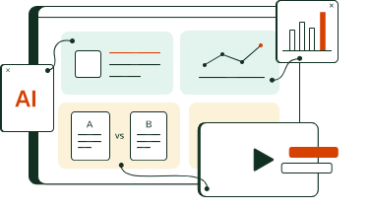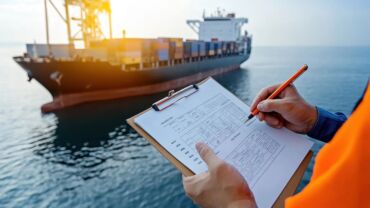Every five years, the World Customs Organization (WCO) updates its list of international product codes for global trade. The list, known as the Harmonized Commodity Description and Coding System, or the “Harmonized System” (HS), covers 5,300 commodity groups and is used by more than 200 countries to categorize trade products, set and collect trade tariffs, guide tax policy, establish rules of origin, and collect data on virtually every aspect of global trade, including quotas, pricing, and transport statistics.
A new set of HS codes is due to arrive in January 2022, and all companies that engage in international trade are responsible for making necessary updates and using the correct HS code to label their products for shipping. Monitoring and updating HS codes can be a complex and time-consuming task, however, so it is imperative that companies prepare for upcoming changes and implement the processes and tools necessary to avoid costly misclassifications.
______________________________________________________________________________
For more on the 2022 HS edition, watch our on-demand webinar, “Preparing for the WCO’s 2022 HS Amendments.”
________________________________________________________________________________
Why do HS codes change?
The WCO updates HS codes primarily to account for advances in technology, the development of new products that aren’t adequately addressed in previous lists, and the elimination of products and/or categories that have become obsolete.
For example, the 2017 HS edition does not have a separate category for smartphones, but smartphones are now so pervasive that the 2022 edition includes a separate category for them. Likewise, hybrid vehicles were not being produced and sold at a high enough volume in 2017 to merit their own HS code, but the 2022 tariff schedule includes several new categories for hybrid vehicles, parts, and materials.
New HS codes are also added for products that have reached a critical mass of trade volume, or which impact the environment in some significant way. So, for instance, the growing market for insects as human food has become large enough that a category for insect-based food products has been added to the new HS 2022 edition. Other relatively new products, such as 3D printers, drones, and vape pens, have also been assigned a code – and electronic waste, or e-waste, has earned its own category in 2022.
______________________________________________________________________________
Take a look at our fact sheet summarizing the latest WCO changes, “Key updates in the Harmonized System 2022 Edition.”
________________________________________________________________________________
HS updates are a major classification challenge for companies
For companies trying to keep track of all these changes and updates, the breadth and depth of the HS presents a complex classification challenge, especially if the company is a multinational that distributes hundreds or thousands of products to dozens of different countries.
In total, the HS includes 97 chapters on every imaginable import/export category, with hundreds of subcategories in each chapter covering thousands of individual products, parts, and materials. Not only do companies have to keep track of changing HS codes for each product they sell, they also have to monitor HS changes for parts and materials of those products, as well as changes in the category subheadings and accompanying notes for each product.
How to read an HS code
The WCO standardizes HS codes at the six-digit level. That six-digit code is the international standard for all participating countries. The first two digits indicate the HS chapter heading, the second two identify the product heading, and third two identify the specific subheading or subcategory of a given product.
For example, the code “6105” applies to the general category of “men’s or boys’ t-shirts, knitted or crocheted,” and that product category is further subdivided according to the materials used and how the product is made.
So, for example:
- HS code 6105.10—applies to shirts made of cotton
- HS code 6105.20—applies to shirts made of man-made fibers
- HS code 6105.90—applies to shirts made of other textile materials
In this case, the “61” refers to the HS chapter that applies to knitted or crocheted articles of clothing; the “05” narrows it down to “men’s or boys’ t-shirts”; and “.10,” “.20,” and “.90” identifies the material used to make the shirts. In addition, there are HS codes for shirts made of synthetic fibers, silk, and other materials, as well as separate codes for knit shirts and sweatshirts that are not hand-crocheted. Many HS subheadings also contain a verbal description that explains precisely how the code in question should be applied.
To illustrate how complicated the WCO’s five-year updates can get, consider that in 2022:
- 370 HS headings were added
- 146 HS headings were deleted
- 272 descriptions were modified
- 130 standard notes were added
- 12 standard notes were deleted
- 287 standard notes were modified
All in all, 49 of the HS code’s 97 chapters were updated for 2022. And if none of the above was complicated enough, it’s important to know that there are no hard and fast rules about when countries must adopt the new HS codes. Mexico, for example, just recently implemented the 2017 updates. That’s why companies need to know which version of the HS is being used – for every country they do business with at a given time.
How companies and trade compliance teams can prepare for the 2022 HS changes
In order to prepare for these upcoming HS changes, importers and exporters need to know which of their products are affected and have a plan for updating any new HS codes. They must also monitor customs communications for any additional changes that may arise. Companies that don’t take these steps seriously risk product misclassification, customs delays, supply chain bottlenecks, and other potentially expensive disruptions.
Follow these 7 steps to prepare for the 2022 HS updates:
- Create a list of all products and their associated HS codes
- Create a list of all applicable changes for all product destination countries
- Compare lists, starting at the global level
- Then compare subheadings, product descriptions, and notes
- Compare number by number and identify necessary changes
- Update all codes, descriptions, effective dates, etc.
- Validate changes by comparing them against a relational database
Remember these classification tips and best practices:
- Allow enough time for a thorough re-classification process
- Don’t forget to monitor updates to product descriptions and notes
- Take into account any cascading logic in place for planned updates
- Continue to monitor for subsequent customs changes
- Re-validate codes from time to time, or automate re-validation
Smaller companies with relatively few products may be able to complete the re-classification process manually. However, some form of classification software is necessary if a company wants to automate any part of the process, take advantage of proprietary code databases, or ensure classification accuracy through continuous monitoring and revalidation.








